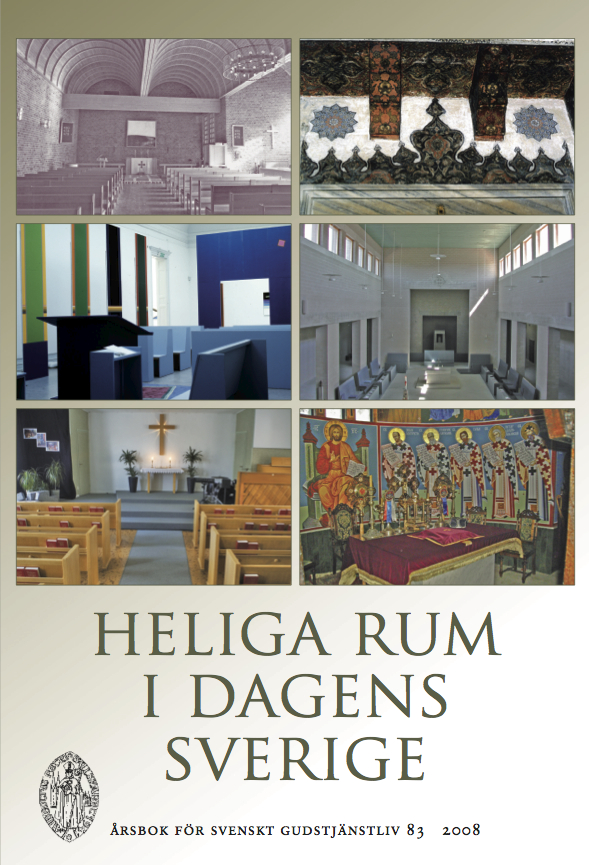Det heligas plats i katolska kyrkorum i vår tids Sverige
Abstract
The Place of the Holy in Catholic Churches in Present-day Sweden
In Good Taste, Bad Taste & Christian Taste, the author Frank Burch Brown poses two questions relevant to my essay: »How is a sacred place made? And how is a place made sacred?» According to Christian doctrine, a place is made sacred through its relationship with God, a circumstance, which is ritually marked in the Catholic Church. The other question on how a place is made sacred focuses the basic need of human beings to experience sacred objects and buildings with their senses in order to be able to understand, relate and engage. The Catholic Church has always relied on objects with specific liturgical functions to convey a sense of sacredness, and in many countries the designers of church buildings also use various architectonic means to create a sense of wonder in the beholder.
Specific areas are reserved for the Eucharist, the Baptism, and the Teaching in a church, and special furnishings are provided for them. In a Catholic church there are even two pieces of furnishings connected with the Eucharist, the altar and the tabernacle, signalling its pre-eminence. The tabernacle plays an important role in sanctifying the church interior as the site where Christ is truly present in the Host. When the lamp is lit, God is to a Catholic literally at home. These special places and furnishings thus play an important role as interfaces between God and humanity.
The interior design of a Catholic church is influenced both by global liturgical tradition and local visual culture. The decrees of the Second Vatican Council and the Roman Missal are important, but Catholic churches are not textual mirrors. Local design tradition is of equal importance, which the Sacrosanctum Concilium recognizes. Thus, the character of Catholic churches in Sweden are not only dependent on the general written directives of the world wide Church, but also on the tradition of Swedish architecture and design.
Despite having members from all parts of the world (native Swedes are in minority), Swedish Catholic churches show a high level of visual inculturation. A rectangular space with a wide and high nave, is the most common shape. The space is simple, well-lit, open, and uniform, and easily encompassed by the eye. The furnishings are likewise simple in form. These traits are common to other denominations as well, as e.g. the Lutheran Church of Sweden. The photos of church interiors in this essay show this clearly. As places, the furnishings associated with the sacraments and their emphases are the main means by which an impression of sacredness is given, rather than through dramatic architectural design efforts.
Downloads
Publicerad
Nummer
Sektion
Licens
© författarna, Laurentius Petri Sällskapet för svenskt gudstjänstliv samt Artos & Norma bokförlag. Det är tillåtet att kopiera och använda material ur Svenskt Gudstjänstliv för forskningsändamål om källan anges. För övriga ändamål kontakta respektive artikelförfattare samt förlaget. Särskilda restriktioner kan gälla för bildmaterial.


